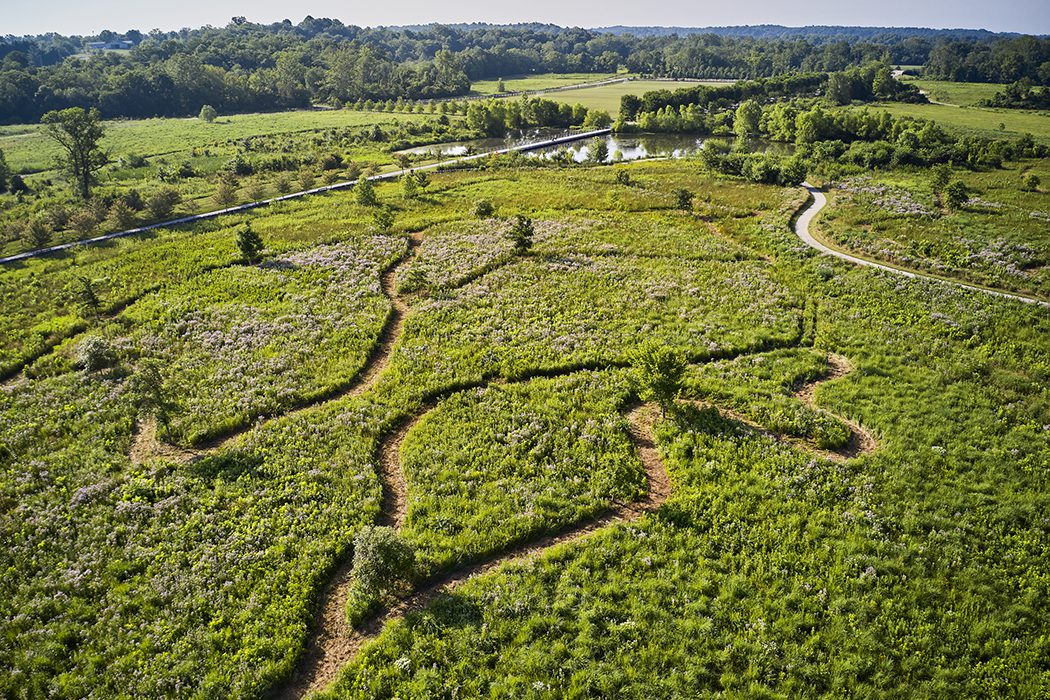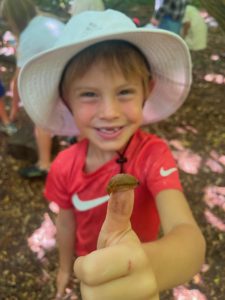
10 ways you can celebrate Earth Day in 2025
Earth Day is a day to celebrate and give back to our planet. We celebrated this year with an evening festival at Broad Run Park, followed the next morning by a creek sweep. So, what on earth can you do to mark the occasion—if not today, maybe sometime this spring? We have some suggestions for how you might get started, like learning how this annual event came about.
1. Learn the history of Earth Day
The first Earth Day was on April 22, 1970. About 20 million Americans—about 10% of the total population at the time—participated in this inaugural celebration. In the same year, the U.S. Environmental Protection Agency (EPA) was formed. This was the birth of the modern environmental movement as we know it today. For more information on the origins of Earth Day, visit earthday.org.
2. Go down a rabbit hole of nature discovery
Is there a particular nature subject that has piqued your curiosity? Maybe there’s an outdoor activity you’d like to try but want to gain more knowledge or build skills before you begin? Take the opportunity to learn using resources from libraries and environmental organizations. You might even have fun going down rabbit holes of new discoveries—or rabbit warrens, to borrow words from our founder and chairman.
Be on the lookout for community workshops on subjects of interest to you. The Parklands offers a wide array of educational programs, many of which are free to attend. For instance, you can dive into the fascinating science of turtles this May at our annual Junior Explorer Turtle Derby! Our Junior Explorer events offer fun for the whole family. At these free events, participants learn about nature topics through hands-on activities and engaging demonstrations.
You can also join us this summer to learn more about birdwatching at our three-day Birding 101 workshop! This course is free for Members and is led by the esteemed naturalist Andrew Melnykovych. Learn more about these events and more here.
3. Share and apply your nature knowledge
Anytime you’ve learned something new about nature, share the information with families and friends. This can spark fun conversations and future discoveries out in the parks. To find out more about activities like fishing, gardening, and sightseeing at The Parklands, visit our Find an Activity page.
 4. Get your hands dirty
4. Get your hands dirty
Kids enrolled in our seasonal Outdoor Adventure Camps delight in the opportunity to experience nature up close. Often, this includes searching for fossils while walking along the banks of Floyds Fork. You might enjoy a creek walk of your own! (Just make sure to leave all fossils and other finds behind for the next visitor to enjoy!)
There’s also the satisfaction that comes from tending to flower beds, introducing new plants, and brightening up your landscapes. If you’re new to gardening, you might seek out tips from local gardening resources. Experts at your local garden center or plant nursery can provide information on native gardens and advise you on practices that work well in our area.
You can also get your hands dirty as a volunteer at The Parklands! Learn more below.
5. Start a new nature tradition
Getting outside in nature is a great way for families to help kids explore their creativity. You might pick out a favorite tree together and make plans to return to the site throughout the year to see how the tree changes over different seasons. If your kids enjoy hands-on creativity, consider starting a tradition of nature-inspired crafts! Looking for a fun idea to get you started? A croaking frog cup is a great at-home craft for kids who love the sounds of tree frogs! Find instructions for this craft on our YouTube page.

Photo by Maria Koerner
6. Go on a nature walk
There’s nothing quite like a walk in nature for appreciating what the Earth gives to us on a daily basis. When it comes to trails, you have lots of options at The Parklands—more than 60 miles of them! There’s a trail for everyone, no matter what view you’re looking for, whether it’s a forest overlook, the occasional waterfall, or a meadowed valley. Learn more about our trails here.
Spring is a also great time to spot wildlife in the parks. Next time you’re on a trail, actively look for and try to identify birds on your walk. You might also see deer, butterflies, and other wildlife, depending on the season. The more visits you make to the park, the more opportunities you have to see animals in nature! Get some tips for spotting wildlife in this blog written by our Assistant Director of Education, Erin Kinnetz.
7. Start a nature journal
If you see a beautiful flower or anything else that catches your attention while taking a walk, write it down. The Parklands is full of natural wonders (too many to count!), so there’s plenty to see. How you jot down your notes is completely up to you. You might describe what you see in simple or descriptive terms or even write a poem. Sketches can be fun to create too!
8. Take part in a community event
Attending an event with other nature lovers is a great and meaningful way to experience the outdoors. The Parklands offers a welcoming space to connect with others in a beautiful, accessible setting. Visit the parks for events like The Parklands & WLKY 5K in June or seasonal Star Parties with the Louisville Astronomical Society, or join one of the monthly sessions of The Parklands Walking Club. Friday at Floyds is also returning to The Parklands this summer—stay tuned for details on this fun-filled community event!

Photo courtesy of Marilyn Bowman
9. Volunteer in the parks
April is National Volunteer Appreciation Month, and we just had a great group of volunteers turn out for our Earth Day Creek Sweep along Floyds Fork. Volunteers at The Parklands serve as instrumental partners in our mission to preserve and maintain unexcelled parklands that reflect the needs and values of our whole community. To gain a perspective from two volunteers and learn how you can get involved, read this recent blog article. You can also join us at our upcoming Volunteer Orientation on May 8 to learn about current volunteer opportunities.
10. Engage in citizen science
Citizen science is a partnership between the public and professional researchers to answer scientific questions together. Taking notes and recording data are important parts of the scientific process.
The Great Backyard Bird Count (GBBC), launched in 1998 by the Cornell Lab of Ornithology and National Audubon Society, is a great example of a citizen science project that learners of all ages can enjoy. The goal of the GBBC is to connect communities through bird watching while gathering useful data on bird populations all over the world. The Parklands gets involved in this project each February with guided birding hikes. You can also take part in other citizen science projects like the iNaturalist City Nature Challenge Bioblitz, annual monarch butterfly tagging, and more.
No matter how you choose to get involved, we hope you take some time today to reflect on the many gifts and wonders nature provides us all. Our staff at The Parklands is deeply grateful to everyone who supports our mission to preserve invaluable green spaces in our community—on Earth Day and every day.
